Functional fitness is a type of exercise that focuses on improving your ability to go throughout your daily tasks safely and without pain. From carrying bags of groceries to bending down to grab something on the ground, functional exercises strengthen the muscles you use in everyday activities—reducing the risk of injury. This type of training is especially beneficial for older adults who want to stay strong and mobile as they age. Let’s explore a few key functional fitness exercises and their practical uses.
What is Functional Fitness?
Functional fitness aims to teach your muscles to work together. Instead of traditional weight training, which tends to isolate muscles or muscle groups, functional exercises engage multiple muscles and joints. This process mimics the movements you do in your day-to-day life. Whether you’re lifting, bending, or twisting, functional exercises prepare your body to move with more confidence and safety. By improving your strength, flexibility, and balance, functional fitness can help you perform everyday tasks with greater ease and reduce the risk of hurting yourself in the process.
Why Functional Exercises Matter for Older Adults
As we get older, our muscle mass and flexibility naturally decrease—which can lead to weakness, imbalances, and a higher risk of injury. Incorporating functional exercises into your routine can help counteract these effects, letting older adults remain more active and independent.
Functional fitness includes exercises that focus on building strength and improving balance and coordination, which can reduce the risk of falls or strains during regular activities like sitting in a chair, climbing stairs, or carrying something heavy.
Key Functional Exercises for Everyday Strength
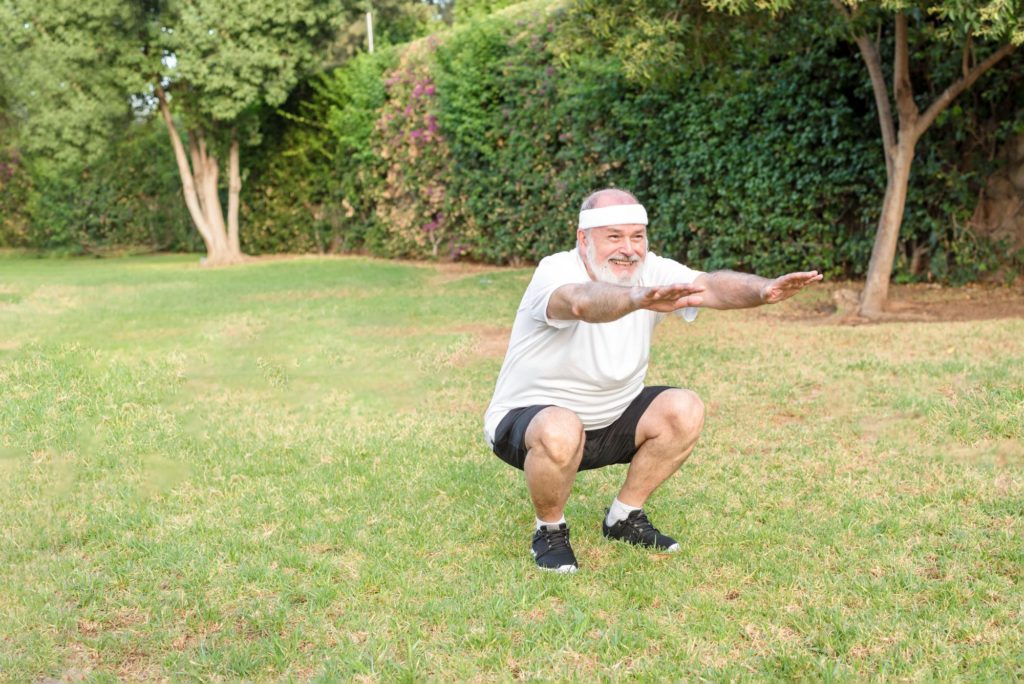
1. Squats or Sit-to-Stands
Practical Application: Sitting down and standing up from a chair, lifting items from lower shelves.
Squats are one of the most effective functional exercises because they strengthen the muscles used when you stand up, sit down, or lift objects from the ground. This exercise primarily targets the legs, hips, glutes, and core, all of which are important for balance and mobility. By practicing squats or sit-to-stands, you reduce the risk of straining your back or knees when lifting or bending.
To safely perform a squat, stand with your feet shoulder-width apart and keep your chest lifted. Lower your hips back and down as if sitting into a chair, making sure your knees stay behind your toes, then press through your heels to stand back up, keeping your back straight throughout the movement. Hold your arms out in front of you for better balance.
Tip: For a modified exercise, perform squats using a chair for support by sitting and standing repeatedly. This is called a sit-to-stand. Using your arms to help you sit down or stand up can also target your triceps.
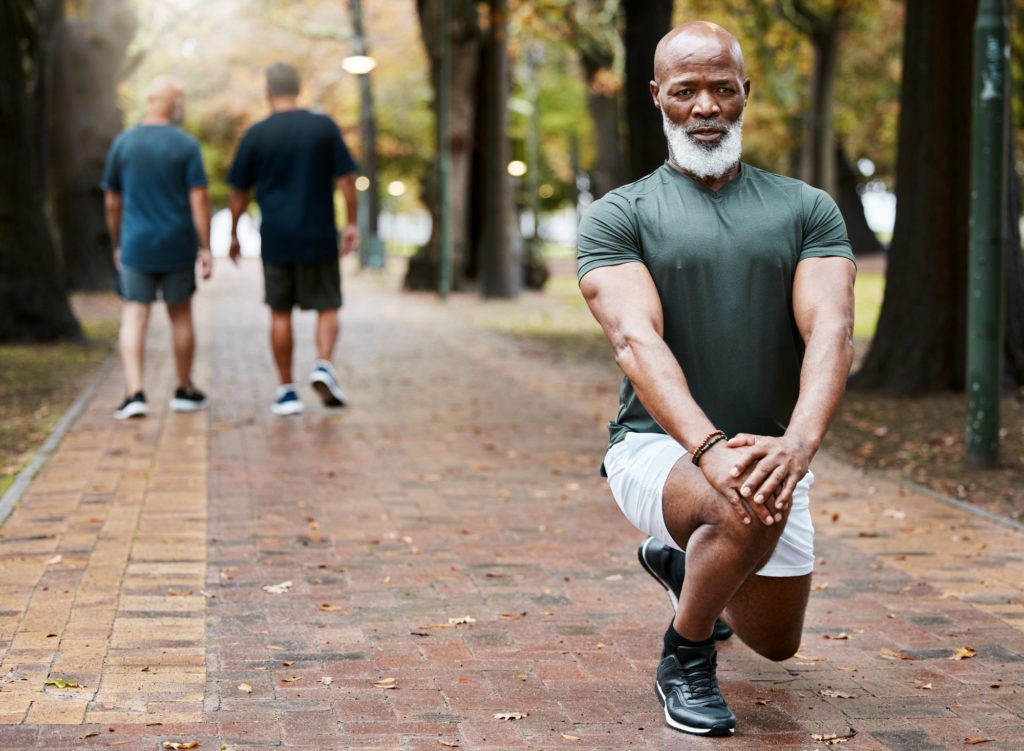
2. Lunges or Reverse Lunges
Practical Application: Bending down to pick something up, walking upstairs, maintaining balance.
Lunges are a great exercise for improving balance, leg strength, and hip mobility. This movement mimics actions like stepping forward or backward to pick something up. Strengthening your legs and core with lunges can help prevent falls or muscle strains when navigating uneven surfaces or bending down to reach objects.
Stand tall and step forward (or backward) with one foot. Lower your body until both knees form 90-degree angles, with your back knee hovering just above the ground. Push through your front foot to return to standing and switch legs.
Tip: If keeping your balance is difficult at first, hold onto a sturdy surface for support while performing lunges.
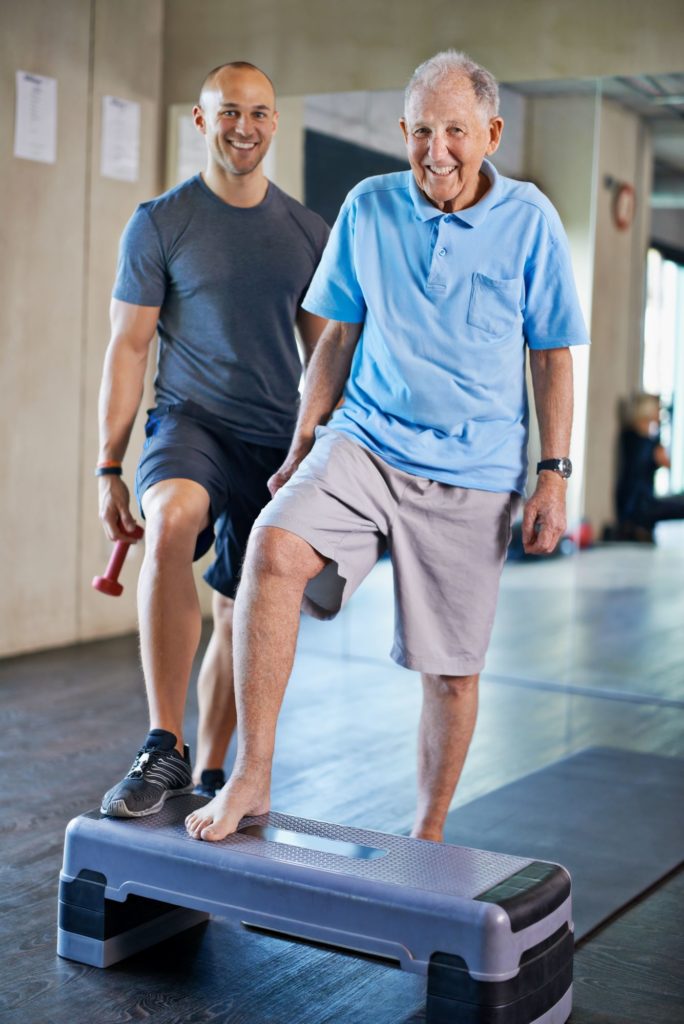
3. Step-Ups
Practical Application: Climbing stairs, stepping onto curbs.
Step-ups are a simple but effective functional exercise that strengthens the legs and improves balance and coordination. They replicate the motion of stepping up onto a surface, which is a movement most people do several times a day, especially when navigating stairs or curbs. By strengthening your leg muscles and improving your balance on one leg, you reduce the risk of stumbling or injuring yourself during these everyday movements.
Stand in front of small step or step-up bench. Step onto the surface with one foot and bring your other foot up to meet it. Step back down one foot at a time, and repeat, alternating your lead foot.
Tip: Start with a lower step and increase the height as you become more comfortable. Add light weights as you get stronger!
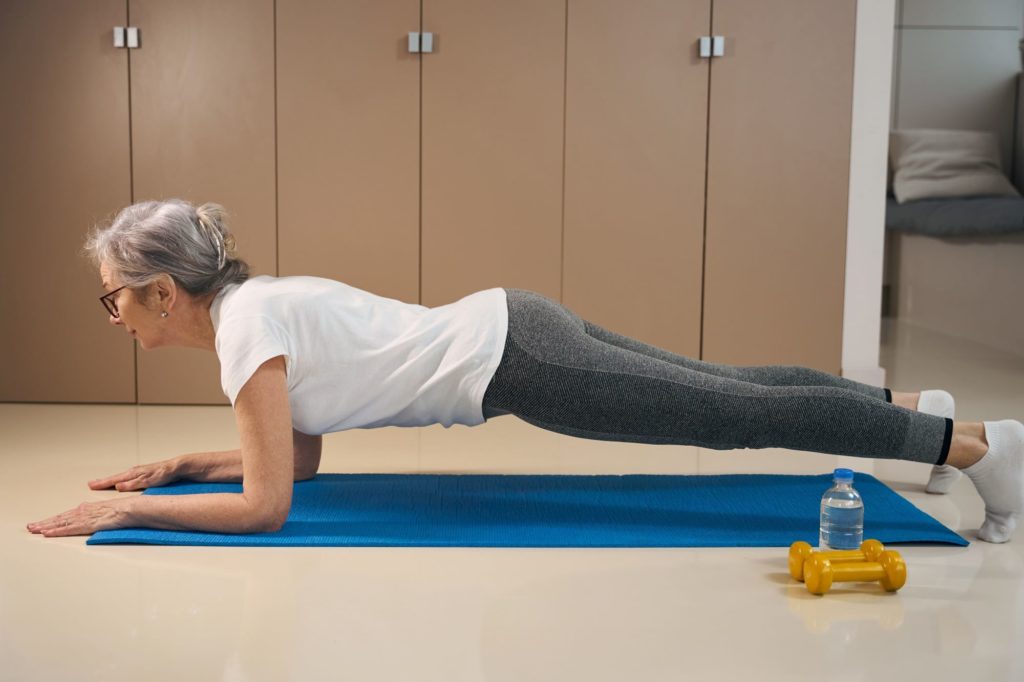
4. Core Exercises: Bridge, Opposite Arm and Leg Raise, and Plank
Practical Application: Bending, twisting, lifting, and maintaining good posture.
Core exercises are key for building strength and stability in the muscles that support your spine and torso. Strengthening your core can also help reduce the risk of back injuries and improve your balance. Three excellent functional core exercises for older adults are the bridge, opposite arm and leg raise, and plank. Modifications are available for most of these exercise as needed.
Bridge: Lie on your back with feet flat and knees bent. Lift your hips toward the ceiling, squeezing your glutes, then lower down.
Opposite Arm and Leg Raise: Start on all fours, extend one arm forward and the opposite leg back, hold, and then switch sides.
Plank: Hold a push-up position with your forearms on the floor and body straight. For beginners, you can modify by lowering your knees.
Tip: Start with shorter holds or fewer repetitions and gradually increase as your strength improves.
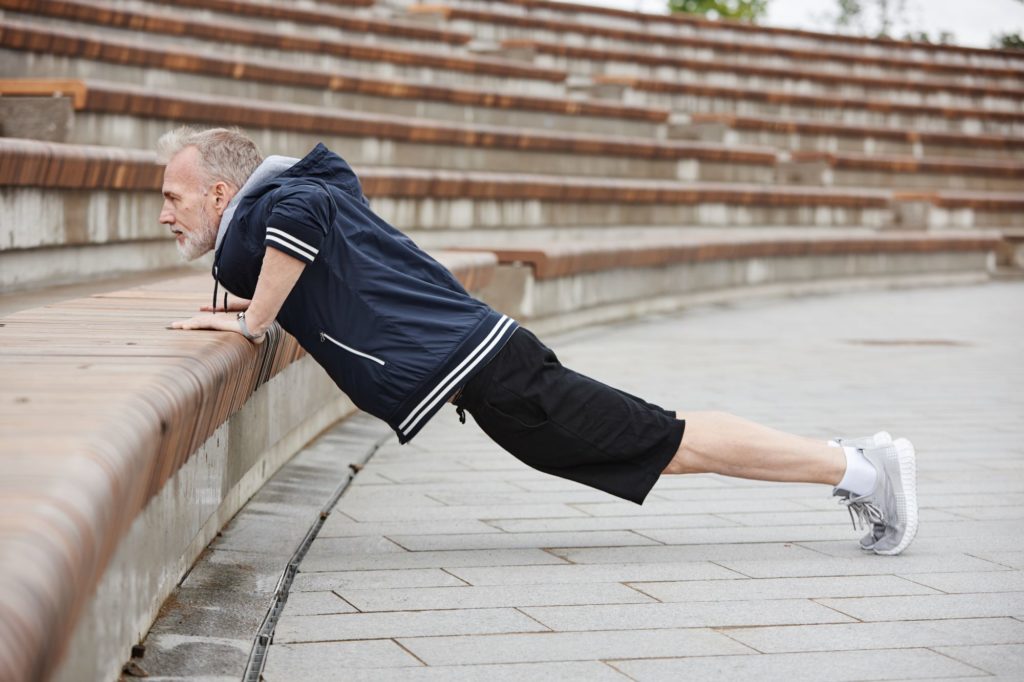
5. Wall Push-Ups
Practical Application: Pushing open doors, improving upper body strength.
Wall push-ups are a beginner-friendly exercise that target the chest, shoulders, and triceps. This movement simulates pushing actions you perform in daily life, such as pushing open a door or getting up from a seated position. In emergencies, it can help you get up from a fall. Wall push-ups are a great alternative to regular push-ups, especially for older adults or beginners who need a lower-impact option.
Stand facing a wall with your hands placed slightly wider than shoulder-width apart. Lean forward against the wall while bending your elbows downward (not outward), bring your chest towards the wall, then push back to the upright position.
Tip: As you get stronger, increase the difficulty by stepping farther away from the wall or using a sturdy counter for a steeper angle.
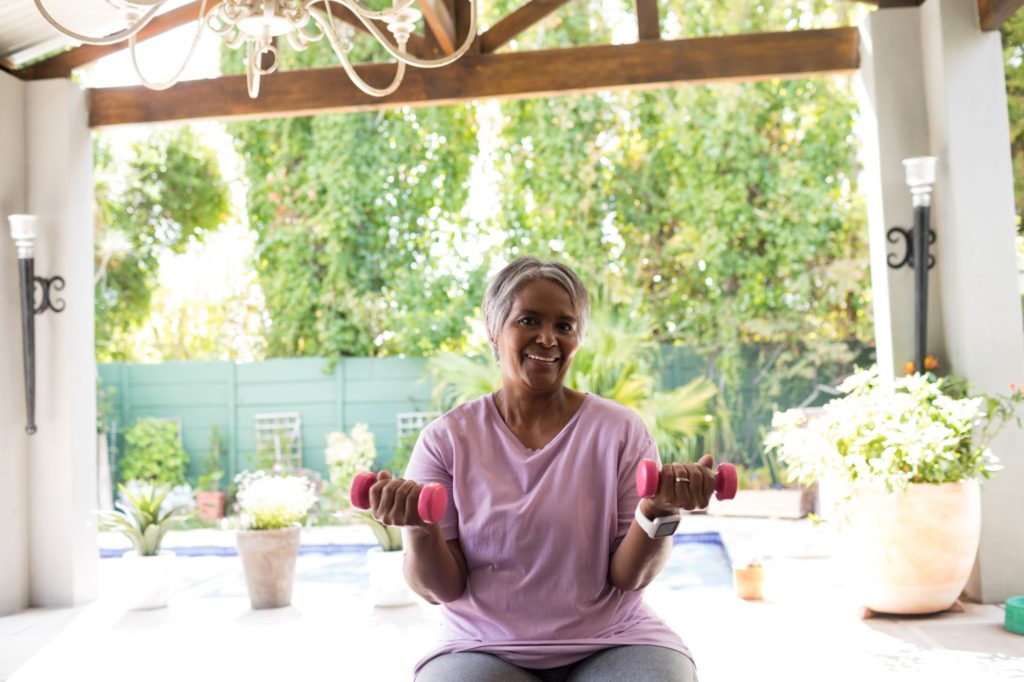
6. Bicep Curls
Practical Application: Lifting and carrying objects, such as grocery bags or household items.
Bicep curls are a simple yet effective exercise for strengthening your arms. This movement directly targets the biceps, the muscles that hold much of the responsibility for lifting and carrying objects. Whether you’re lifting a bag of groceries or picking up household items, stronger biceps help make these tasks easier and reduce the risk of strain or injury.
Hold a dumbbell or other weight in each hand, with palms facing forward. Keeping your elbows close to your sides, curl the weights up toward your shoulders, then slowly lower them back down.
Tip: Start with light weights and gradually increase the resistance as you become more comfortable with the movement.

Functional Fitness for All Ages
While functional fitness is especially beneficial for older adults, it’s an effective training method for people of all ages. These exercises promote overall strength, flexibility, and balance, which are essential for preventing injuries and improving physical performance in any stage of life. Whether you’re carrying groceries, climbing stairs, gardening, or chasing after kids and grandkids, functional exercises help you move more efficiently and confidently, reducing the risk of muscle strains or joint injuries.
Working with a Trainer
Working with a personal trainer or fitness coach can be a helpful option for many people. A trainer can provide personalized guidance and help you learn the right form for each exercise, which increases your confidence and reduces the risk of injury. Plus, with a trainer’s support and encouragement, you can progress at a pace that suits your ability.
Functional fitness exercises are more than just workouts—they are practical movements that translate into everyday activities. Whether you’re looking to stay mobile or simply want to improve your everyday fitness, functional exercises provide the foundation for a healthier, more active lifestyle.
This article is for informational purposes only and does not constitute professional fitness or medical advice. For more information about functional fitness and your health, talk with your medical provider.
